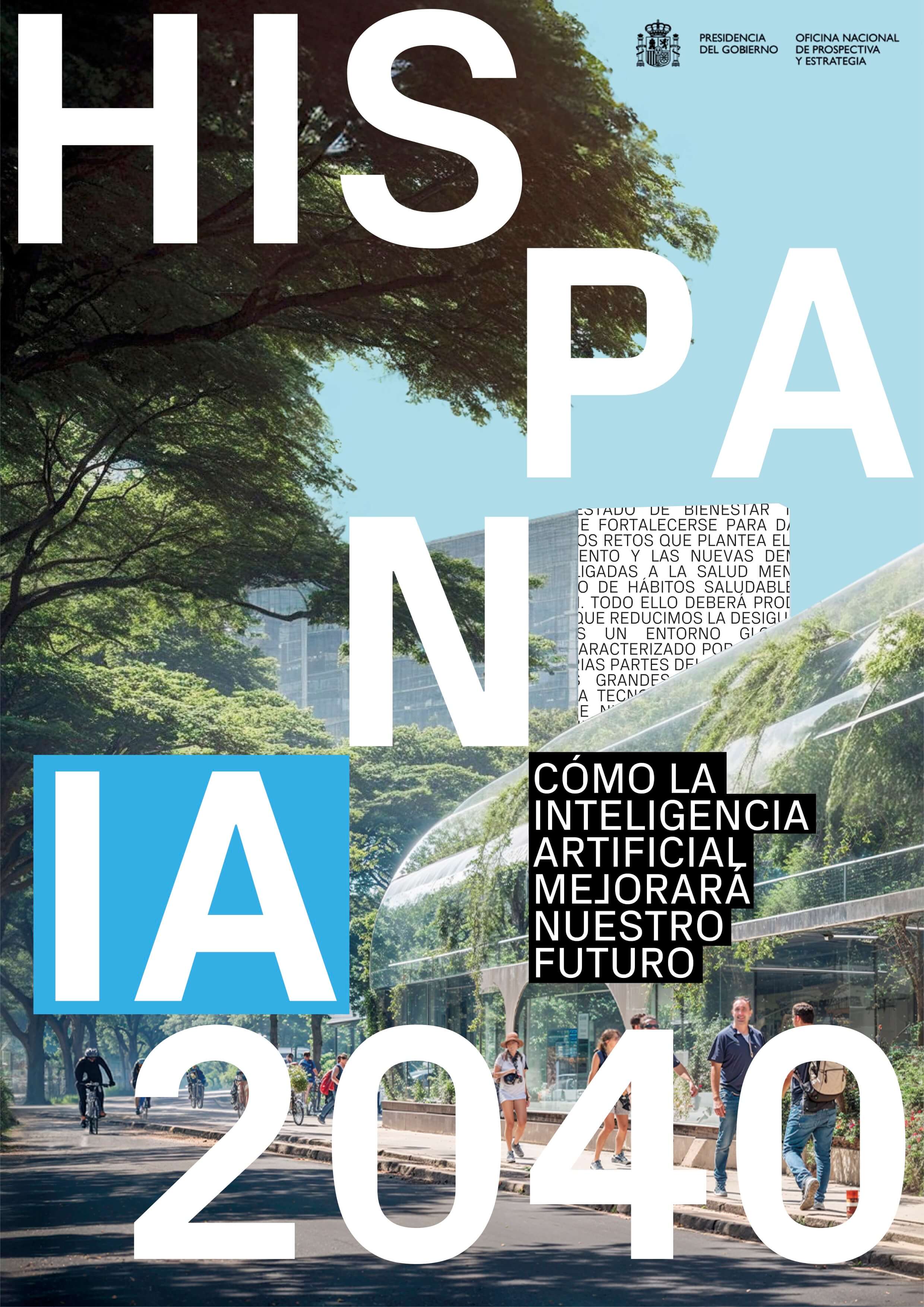The purpose
Artificial Intelligence (AI) is one of the technological innovations with the greatest potential to transform our society in the future. Like electricity, the internet, or the combustion engine during their time, AI is set to become a mainstream technology capable of redefining entire industries, boosting our productivity, and modernising our welfare state, among other things. Several studies have been published on how to accelerate the adoption of AI in firms and public services. However, none have fully explored how AI can help us address some of the major challenges our country will face in the coming decades. This is the purpose of HispanIA 2040: to understand how AI can enhance our future well-being and the choices we must make to turn this vision into a reality.
HispanIA 2040
This study analyses the benefits and costs of using AI to address the five main challenges facing Spanish society in the long term:

- Modernising the private sector
- Strengthening the welfare state
- Achieving environmental sustainability
- Enhancing security and defence systems
- Reducing inequality
HispanIA 2040 recognizes the substantial uncertainty surrounding AI's ability to approximate human intelligence, while offering a transformative yet realistic vision of what this technology could mean for Spain by 2040. To this end, it prioritizes AI applications supported by empirical evidence and quantifies their potential impact considering Spain's starting point in each of the identified challenges.
It also sets out twelve priority lines of action to facilitate the adoption of AI, improve our internal development capabilities and ensure that its use is based on ethical and responsible principles.
Download document:
-
12
Experts
-
5
Challenges
-
12
Strategic policies
The future of Spain in images
These images evoke some realities that AI will enable us to observe in Spain in the coming decades.
Frequently asked questions
HispanIA 2040 and the National Artificial Intelligence Strategy 2024 are two distinct yet complementary initiatives with a common goal: to harness the potential of Artificial Intelligence (AI) to increase Spain's economic prosperity and social welfare. Both the diagnoses and the lines of action set out in the National Artificial Intelligence Strategy 2024 have been taken into account in the preparation of HispanIA 2040.
There are, however, significant differences in the focus and goals of the two projects.
The National Artificial Intelligence Strategy 2024 aims to position Spain as a leader in the development and ethical application of AI, integrating it into the economy and society. In contrast, HispanIA 2040 focuses on how AI can address the major challenges the country will face in the future. HispanIA 2040 is not a blueprint for what capabilities we need to develop to have a leading AI ecosystem in the coming decades (the how). It is a study of how AI can contribute to building a more productive and sustainable economy, enhancing the efficiency and quality of public services, and modernising security and defence systems, all while addressing inequality and bridging social divides (the what for).
The time horizon of the analysis is also different. The Strategy is a roadmap to be implemented in the short term (2024-2025), while HispanIA 2040 considers the potential impact of AI on the Spanish economy and society over a horizon of at least 15 years.
The conceptual framework of HispanIA 2040 is grounded in Spain 2050. The former looks at how AI can contribute to overcoming some of the biggest challenges we face as a country in the medium and long term, which have been analysed in detail in Spain 2050.
Likewise, technological change is one of the megatrends that, together with ageing, green transition and increasing urbanisation, shapes the challenges analysed in Spain 2050. HispanIA 2040 explores the transformative potential of AI as a general-purpose technology, capable of influencing most aspects of our lives.
Yes, AI software was used in three phases of the project. Firstly, tools such as ChatGPT and Copilot were employed to identify areas of opportunity and applications where AI could make a difference in the coming decades. This provided a first approximation of the main themes for analysis in less time than if no AI had been used. Secondly, during the writing phase of the project, the assistants were used to improve the clarity and flow of the ideas and to make some complex concepts more accessible. Finally, generative AI was used to create the basis for the images of the future. Given the limitations of this technology in defining realistic spaces and characters, the results were improved using design tools to meet the visual standards of the project.










